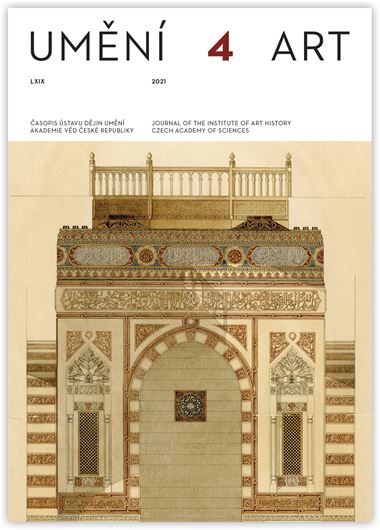Petr Skalický
The Labyrinth of the World? The Theme of a Painting of a Labyrinth on the Romanesque Portal of the Monastery Church in Plasy
The discovery of the Romanesque portal of the western facade of the Cistercian church in Plasy is one of the most important events of recent years for Czech medievalists and conservationists. The exterior side of its tympanum carries a relief, while on the interior side there is a unique wall painting of a labyrinth. On both sides appear repeated crosses. On the relief they are depicted as processional, while in the painting the theme of the cross is emphasised with one cross in the centre of the way through a labyrinth that is itself set in the centre of another cross delineated in the background. In terms of interpretation, the two sides are linked by the idea of movement (the processional crosses, the path through the labyrinth) and this is also connected with the very function of the portal, through which one moves from the external profane world into the sacral church (ecclesia). The theme of the labyrinth has appeared in art from antiquity up to the present day. In every epoch it has been applied in different contexts that corresponding with the different functions. The first labyrinth in a Christian church dates from the 4th century. From the 9th century the labyrinths appear also in manuscripts. In European sacral architecture, the theme appears only in — roughly — the 12th to 15th centuries. The labyrinth in Plasy needs to be considered with an eye to other labyrinths of the period that have survived, particularly in France and Italy, and to medieval etymological interpretations of the word labyrinthus. Labyrinthus represented the hard way of the cross (imitatio Christi), but also a difficult yet triumphant journey into the womb of the Church. These interpretations were not contradictory but rather complementary and could absorb different levels of meaning. Thus, the labyrinth in Plasy could also be associated in one etymological meaning (labor et intus) with the order’s maxim Ora et labor, and also be an allusion to the crusades, which were causing a great stir throughout Europe at the time and inspired artistic production not just in the courts of rulers, but inside the Cistercian order itself.
Author's email:
skalicky.petr@gmail.com
Full-text in the Digital Library of the Czech Academy of Sciences:
https://kramerius.lib.cas.cz/uuid/uuid:5ea8e474-bf3e-4d43-ba1f-b88962b0983d
< back

